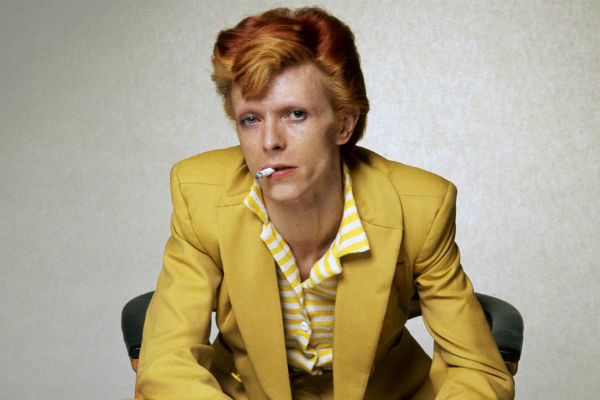 In 1974, David Bowie was undergoing the sort of musical and aesthetic transformation that would come to define his career. Bowie knew that being in Harlem was going to be a place of inspiration, as he did here, if he couldn’t get it from being in Harlem he would bring Harlem to him like he did with Gouster.
In 1974, David Bowie was undergoing the sort of musical and aesthetic transformation that would come to define his career. Bowie knew that being in Harlem was going to be a place of inspiration, as he did here, if he couldn’t get it from being in Harlem he would bring Harlem to him like he did with Gouster.
He’d recently killed off his androgynous alien character Ziggy Stardust, and he was searching for a new identity to inhabit. He discovered that new way to be within the smooth horn-laced music that was gaining popularity in U.S. clubs at the time. And so, while on a month-long break from the Diamond Dogs Tour, he entered a Philadelphia studio with a team of veteran Harlem musicians (including a young Luther Vandross) and began recording his singular version of American soul music. These recordings would eventually become the 1975 album Young Americans, but not before briefly settling into the form of the never-released album which has come to be known by fans as The Gouster (means a type of dress code worn by African American teens in the ‘60’s, in Chicago”).
…sounded like it was played live in a loft party in Harlem and he added (Again) to the title. It wasn’t the two-and-a-half-minute length of the original either.”
That transitional album is finally getting an official release via the upcoming, aptly named box set Who Can I Be Now? (1974 – 1976). Session producer and longtime Bowie collaborator Tony Visconti will provide notes for the long-awaited release. Here’s an excerpt:
Gouster was a word unfamiliar to me but David knew it as a type of dress code worn by African American teens in the ‘60s, in Chicago. But in the context of the album its meaning was attitude, an attitude of pride and hipness. Of all the songs we cut we were enamored of the ones we chose for the album that portrayed this attitude.
David had a long infatuation with soul as did I. We were fans of the TV show Soul Train. We weren’t ”young, gifted and black,” but we sure as hell wanted to make a killer soul album, which was quite insane, but pioneers like the Righteous Brothers were there before us.
So The Gouster began with the outrageous brand new, funkafied version of David’s classic “John, I’m Only Dancing“, a single he wrote and recorded in 1972, only this time our version sounded like it was played live in a loft party in Harlem and he added (Again) to the title. It wasn’t the two and a half minute length of the original either.
We maxed out at virtually seven minutes! With the time limitations of vinyl (big volume drop with more than 18 minutes a side) we could only fit two other long songs on side one, ”Somebody Up There Likes Me” and ”It’s Gonna Be Me” both about six and a half minute songs. We had hit the twenty-minute mark. Technically that worked because ”It’s Gonna Be Me” had lots of quiet sections where the record groove could be safely made narrower and that would preserve the apparent loudness of side one.
Side two also hit the twenty-minute mark with “Can You Hear Me” saving the day with its quiet passages. Forty minutes of glorious funk, that’s what it was and that’s how I thought it would be.
Who Can I Be Now? is the follow-up to 2015’s acclaimed David Bowie – Five Years (1969 – 1973).

Photo: David Bowie/Facebook
Side 1
1. John, I’m Only Dancing (Again)
2. Somebody Up There Likes Me
3. It’s Gonna Be Me
Side 2
1. Who Can I Be Now?
2. Can You Hear Me
3. Young Americans
4. Right
While the full details won’t be released until next week, we have been given a look at the cover art and tracklist for The Gouster.
Here’s a rare video recording from the session:
Via source
Become a Harlem Insider!
By submitting this form, you are consenting to receive marketing emails from: . You can revoke your consent to receive emails at any time by using the SafeUnsubscribe® link, found at the bottom of every email. Emails are serviced by Constant Contact








